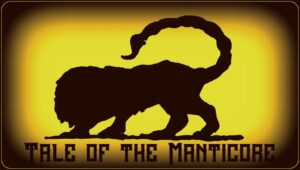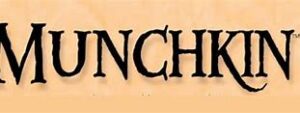Ankur: Kingdom of the Gods a 2nd Printing of an OSR-like Pulp-ish Sci-Fi RPG
Ankur: Kingdom of the Gods By Chris Miler
This RPG is a second printing split into two books: GM and Player’s guide. It is clearly a labor of love. The game has been written from a clear and deep understanding of the Sumerian mythology and it shows. I was given a pdf copy of the Player’s Guide to read and review, but will still be giving my honest opinions on the game.
Introduction:
It begins with credits and preface wherein the author describes his challenges in getting the work done and then goes directly into an introduction to the game. He uses, what seems to be, a fairly unique d12 system striving for realism and the setting is immersed in Sumerian Mythology with a dose of Howard and Lovecraft along with a strong Stargate the movie aesthetic. It then follows up with the basics of “what is a roleplaying game” followed by a general “how to play this game” section. The author does a good job of explaining these standard ideas found in most roleplaying games.
Core Mechanics:
As I’ve said before, the core dice mechanic is a roll-under d12 modified by 8 Aptitudes [Brawn, Agility, Toughness, Perception, Intellect, Spirit, Influence and Speed] which range from 1-5 to start. You then get a pool of experience points to buy skills which range from more mundane things like Athletics, Reading and Writing to Advanced Tech, Science all the way top Spiritual (which is the only type of magic in the setting which is psionic). The skills are purchased at up to the 9th circle (level). Now the skill circle value added to the associated Aptitude score creates what is called the APN (Action-Potential-Number) which determines your threshold of success.
This APN simulates your character’s chance to attack or use a skill. For example, if you have a Brawn Aptitude of 3 and wanted to make a climb skill check with an Athletics at Circle 3 then your APN would 3+3 = 6. You would then need to roll a 6 or lower on a d12. The intriguing part of the system is the fine details of the roll. If you rolled a 1-5 then you would have a success (a 1 always being a success), if you rolled a 6 exactly then you would get a critical success , a result of 7-11 would be a failure and finally, a roll of 12 would be a critical failure( which is always the case). Now if your PC is subject to a modifier which raises your APN above 12 or lowers it below 1 then there comes in the following adjustment which I find particularly interesting. Note: no modifier may bring your APN below 1 (always a hit) or Above 12 ( always a critical failure ), but it does affect what your rolls mean as follows:
Let’s say you get a modifier of -8 on that roll to climb due to a variety of circumstances then your APN would be
[6 + -8] = -2, now this is below 1 but this is how it is handled:
1) The -8 takes your APN to a 1 (always a success) leaving you with a remaining penalty of -7.
2) You then count backwards from 12–> 11,10,9,8,7,6,5
3) Thus, your critical failure range would be 5-12.
In general, bonuses or penalties just increase the critical ranges.
Therefore, in contrast, if you had a modifier of +8 to the roll then:
1.) Your adjusted APN = 6 + 8 = 14 , but this is above 12( which is always a critical failure) .
2.) So you take 14-11(which is the highest regular value for success) = 3 , then use that to modify your critical success range counting down from 11 .
3.) This is determined by taking 11 – 3 = 8 and giving 8 – 11 as your critical success range.
As you adventure you gain experience with which you can use to improve your skill circles and aptitudes according to a cost chart.
The Setting:
Using a unique naming convention which is very appropriate to the Sumerian Mythology that inspired the author, is one of many things that really makes the world of Ki ( earth) come alive. Ki was visited by alien beings from the world of Nibir who then created the various species of Li-Ku ( the playable human -like species in the game) from the primitive hominid stock on the planet. They used them as slave labor to help them mine the planet for resources which they desperately needed. Then a Great Flood event occurred which caused the Nibru-ene to leave the Li-Ku to what they thought was certain death only to return some years later to find many of them still alive.
The Nibru-ene returned to build many cities and the Lu-Ki have grown to slightly higher station as house servants, bodyguards, soldiers, etc. However, some do their best to resist their “benevolent overlords” and work to forge their own destinies. The main reason the aliens from Nibiru (the home world of the Nibru-ene) want Ki is for its plentiful veins of gold and silver. From these metals they can create a super conductive mineral powder called Mana which when consumed gives them much of their mental and physical advantages which their Lu-ki subjects will rarely, if ever, get a chance to taste.
Art:
The art is solid and evocative. There are some very good pencil drawings of weapons and other equipment. There are some nice maps and star charts to show the relationship between the world of Ki and its relationship to Nibiru.
Conclusion:
This is by no means a deep dive into the setting and rules, but I did spend a fairly significant amount of time reading the majority of the book. The author set out to create a unique RPG that showcased his knowledge and love of science fiction, old-school-table top RPGs (which this fits within for sure) as well as a desire to create a plausible setting connected to myths of ancient alien technology effects on the Earth’s development.
The author accomplished this in spades and I believe the setting and rules are fairly well- thought out. I imagine this place would be rife with adventure and political intrigue. It is not, however, a game which would find much time at my table. Note that this does not make it bad just not to my personal taste. We here at Biggus Geekus like to use the following rating system for settings and rules:
XS: Extra small (hate it would never play again)
S: Small (dislike it not much going for it)
M: Medium (ok, would play it for a while)
L: Large (like it, happy to play a full-blown campaign, but not the best)
XL: Extra Large (love it, one of my favorites, would play any time)
2X: The best game I’ve ever played. My absolute favorite RPG of all time.
With this in mind, I would give this setting and game a solid score of M, or maybe even an L, if I were truly the target audience. I just don’t care to spend too much time on science fiction settings, but do believe this might be a great setting for many folks who find this sort of “Swords & Ray Guns” pulp-science fiction with a dash of Conan and Stargate to their taste.
Randy Nichols of Biggus Geekus
Check out Episode #48 Top 10 Inspirational Books” wherein we discuss this RPG in one of our segments.









